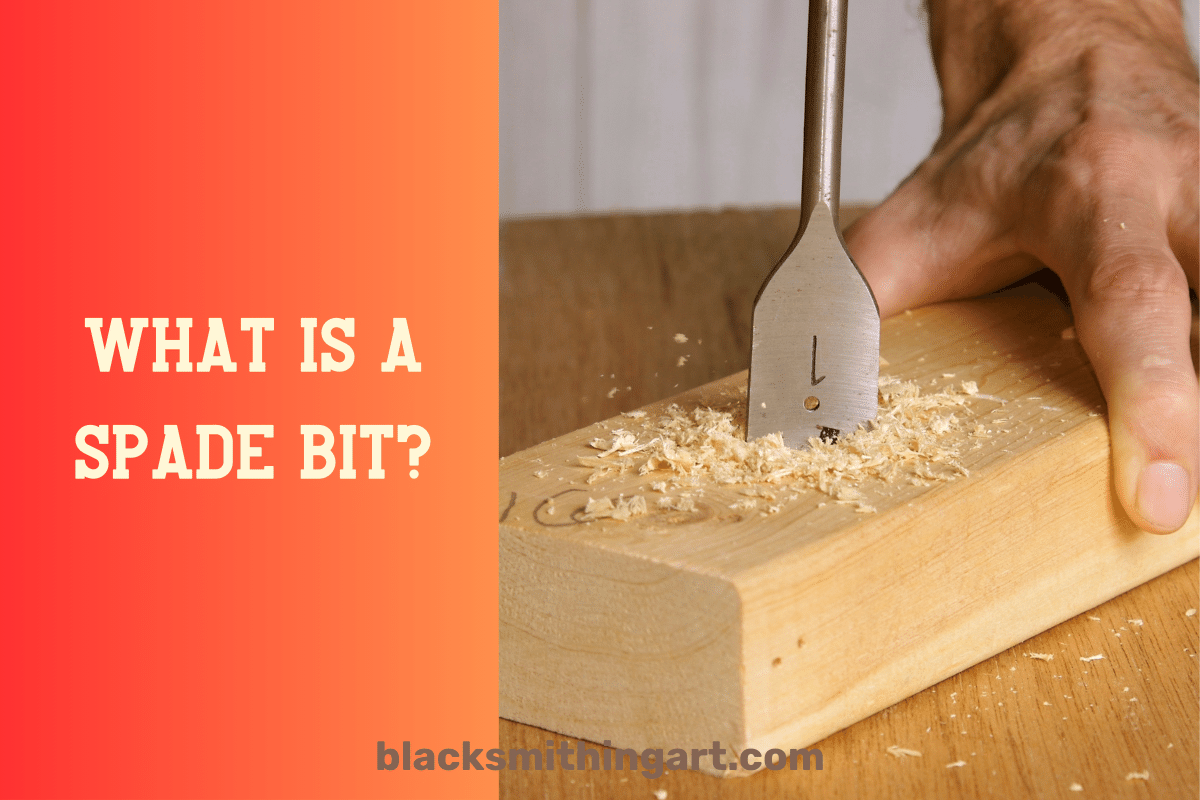
In our quest for knowledge and mastery, curiosity often leads us to explore tools and techniques that enhance our capabilities. One such tool that holds immense potential in woodworking and construction is the spade bit.
If you’ve ever wondered what a spade bit is and how it can revolutionize your drilling experience, you’ve come to the right place. In this article, we’ll unravel the mysteries surrounding spade bits, offering insights into their functionality, applications, and invaluable tips for optimal usage.
Contents
Understanding Spade Bits

So, what is a spade bit? At its core, spade bits are a type of drill bits characterized by their flat, paddle-shaped design. Unlike traditional twist drill bits, which feature spiral grooves for removing material, a drill bit relies on its broad, flat surface to bore through wood, creating large or rough holes efficiently.
The distinctive shape of spade bits makes them ideal to drill holes and even rough holes in wood, providing versatility and precision in various woodworking and construction tasks.
Another thing about spade bits is that it will be better for you to use spade bits softwoods. Of course, you can still use spade bits to drill hardwoods as well but it may result in a rougher cut.
Comparison with Other Drill Bits

While spade bits excel in drilling large holes quickly and efficiently, they are not always the best choice for every task. It’s essential to consider the specific requirements of your project and compare spade bits with other types of drill bits, such as twist drill bits and auger drill bits.
Each type has its strengths and weaknesses, so choosing the right tool for the job is key to achieving optimal results.
Drilling Holes With Precision

Spade bits excel in delivering swift and precise results when you want to drill holes. Whether you’re working with common construction lumber or forming plywood, spade bits offer unparalleled efficiency and control.
The unique design of a spade bit enables it to effortlessly penetrate wood, producing clean and accurate holes with minimal effort.
From creating pilot holes for screws to enlarging existing holes, spade bits prove indispensable in a wide range of applications.
In comparison to a twist drill bit, masonry drill bit, or even a boring wood drill bit, a larger spade drill bit may take more skills when using.
Mastering Spade Bit Usage

To harness the full potential of a spade bit, it’s essential to understand the nuances of their usage. When using a power drill with spade bits, ensure a secure grip and steady hand to maintain control during drilling.
Start by positioning the center point of the spade bit precisely where you intend to drill, allowing it to bite into the wood before applying full pressure. As you drill with your power drill, periodically withdraw the bit to clear away wood shavings and prevent tear-out, ensuring smooth and precise hole formation.
Additionally, when a drill bit gets stuck and doesn’t make any progress, just try clearing away the wood shavings or other waste material and try again.
Applications Beyond The Basics

While spade bits are commonly used for drilling straightforward holes in wood, their versatility extends to more complex tasks. From drilling angled holes for joining wood pieces to boring partial holes for intricate woodworking projects, a spade bit offers unparalleled flexibility.
Whether you’re installing wall studs, attaching a deck ledger board to a wood frame, or working with treated plates, a paddle bit empowers you to tackle any drilling challenge with confidence and precision. For example, a plumber uses a paddle bit to drill through wall studs to install copper or PVC pipes.
When it comes to drilling shallow holes, spade bits are you best tool but when you want to drill deeper holes, you will need a wood boring bit because they are designed for this purpose.
However, if there’s there are smaller holes and you want to make them larger, some experts do not recommend enlarging the existing hole with a spade bit because it can damage the hole.
Additionally, to use spade bits to drill the partial hole is a bad idea when you can see that the center point of the bit drills through the wood.
Tips For Optimal Performance

To ensure optimal performance and longevity of a spade bit, it’s essential to follow a few simple tips.
Firstly, always use spade bits of appropriate size for the task at hand, selecting larger bits for larger holes and smaller bits for precision drilling.
Additionally, keep your spade bits sharp by sharpening them regularly or replacing them when they become dull.
Lastly, avoid overheating by applying moderate pressure and allowing the bit to cool between drilling sessions, prolonging its lifespan and maintaining its effectiveness.
FAQ
What is the purpose of a spade bit?
The primary purpose of a spade bit is to drill large, precise holes in wood quickly and efficiently. With their flat, paddle-shaped design, spade bits are ideal for boring rough holes in wood for various woodworking and construction projects.
Can I use a spade bit instead of a drill bit?
While spade bits are specifically designed for drilling holes in wood, they may not always be suitable replacements for traditional drill bits.
A spade bit excels in drilling large holes efficiently, but it may not offer the precision required for certain tasks. And, even if a spade bit is not your typical choice of drill bit, they serve well for DIYer or even carpenters.
Is a spade bit better than a snaffle bit?
No, a spade bit is not better than a snaffle bit. They serve different purposes; a spade bit is used for drilling holes in wood, while snaffle bits are used in equestrian activities for horse training and riding.
Conclusion
Even though many people don’t realize it spade bits come in really handy in our DIY adventures. So, in this article, we tried our best to discuss what spade bits are, along with providing useful tips and tricks on how and when to use them.
Now, as a DIY enthusiast, you know everything there is to know about this nice tool and we hope that we have addressed any questions you might have had before visiting this blog.


